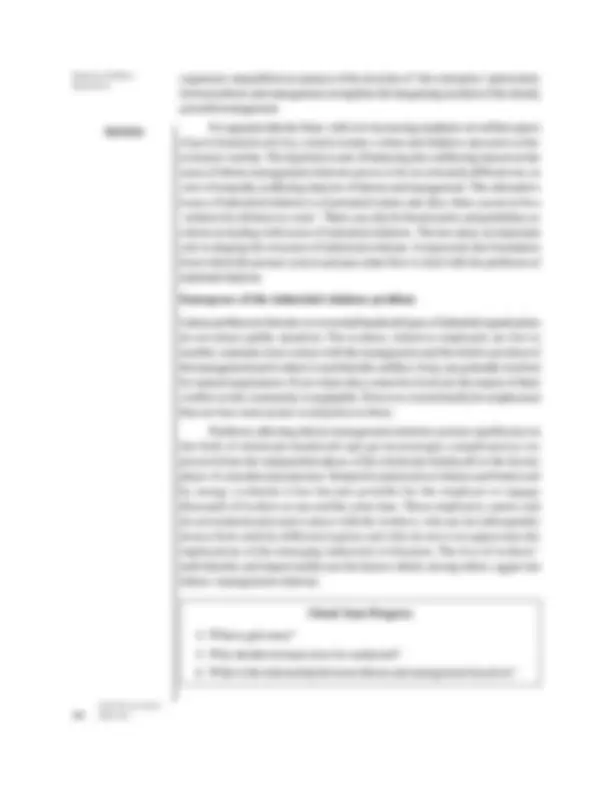



Study with the several resources on Docsity

Earn points by helping other students or get them with a premium plan


Prepare for your exams
Study with the several resources on Docsity

Earn points to download
Earn points by helping other students or get them with a premium plan
Community
Ask the community for help and clear up your study doubts
Discover the best universities in your country according to Docsity users
Free resources
Download our free guides on studying techniques, anxiety management strategies, and thesis advice from Docsity tutors
Human Resource Management (HRM) is a strategic and comprehensive approach to managing people within an organisation. It involves recruiting, hiring, training, evaluating, and rewarding employees to maximise their performance and align with the organisation’s goals. HRM also ensures compliance with labour laws, fosters a positive workplace culture, and supports employee development and well-being. By managing workforce planning, performance, compensation, and employee relations, HRM plays a vital role in organisational success. In today’s dynamic business environment, HRM is increasingly data-driven and aligned with long-term strategic planning, making it an essential function in both large corporations and small enterprises.
Typology: Lecture notes
1 / 2

This page cannot be seen from the preview
Don't miss anything!


Self-Instructional Material 149
Employee Welfare, (vi) Training: The success of the procedure also depends upon imparting Separation training to the supervisors and union representative in handling grievances. This will help to ensure effective working of the grievance procedure. (vii) Follow up: The working of the grievance procedure should be reviewed at periodical intervals by the HR department. The department should periodically review the procedure and introduce the essential structural changes making it more effective.
Industrial relations is a dynamic socio-economic process characterized by cooperation and conflict. The state today has an increasing role to play, with its emphasis on welfare, in maintaining a balance between labour and management, especially in India where the former is inadequately organized.
12.4.1 Issues
Industrial relations is a ‘designation of a whole field of relationships that exist because of the necessary collaboration of men and women in the employment processes of industry.’ It is not the cause but an effect of social, political and economic forces.
It has two faces like a coin—cooperation and conflict. The relationship, to use Hegal’s expression, undergoes change from thesis to antithesis and then to synthesis. Thus, the relationship starting with cooperation soon changes into conflict and after its resolution again changes into cooperation. This changing process becomes a continuous feature in industrial system.
The relationship between labour and management is based on mutual adjustment of interests and goals. It depends upon economic, social and psychological satisfaction of the parties. Higher the satisfaction, healthier the relationship. In practice it is, however, found that labour and capital constantly strive to maximize their pretended values by applying resources to institutions. In this effort, they are influenced by and are influencing others. Both of them try to augment their respective income and improve their power position. The major issues involved in the industrial relations process are terms of employment (wages, dearness allowances, bonus, fringe benefits), working conditions, (leave, working hours, health, safety and welfare); non-employment such as job security, personnel issues such as discipline, promotional opportunities and among others recognition of trade unions. However, in view of sharply divided and vociferously pressed rival claims, the objectives of labour and management are not amenable to easy reconciliation. This is all the more so because the resources are limited. Be that as it may, the means adopted to achieve the objectives which vary from simple negotiation to economic warfare adversely affect the community’s interest in maintaining an uninterrupted and high level of production. Further, in a country like India where labour is neither adequately nor properly
Employee Welfare, Separation
Self-Instructional 150 Material
organized, unqualified acceptance of the doctrine of ‘free enterprise’ particularly between labour and management strengthens the bargaining position of the already powerful management. It is apparent that the State, with ever-increasing emphasis on welfare aspect of governmental activity, cannot remain a silent and helpless spectator in the economic warfare. The legislative task of balancing the conflicting interest in the arena of labour management relations proves to be an extremely difficult one, in view of mutually conflicting interests of labour and management. The substantive issues of industrial relations is of perennial nature and, thus, there can never be a ‘solution for all times to come’. There can only be broad norms and guidelines as criteria in dealing with issues of industrial relations. The law plays an important role in shaping the structure of industrial relations. It represents the foundation from which the present system and procedure flow to deal with the problems of industrial relations. Emergence of the industrial relations problem
Labour problems in factories or even retail handicraft types of industrial organizations do not attract public attention. The workers, wherever employed, are few in number, maintain close contact with the management and the relative position of the management and workers is such that the conflicts, if any, are generally resolved by mutual negotiations. Even where they cannot be resolved, the impact of their conflict on the community is negligible. However, it need hardly be emphasized that our laws must ensure social justice to them. Problems affecting labour management relations assume significance in the field of wholesale handicraft and get increasingly complicated as we proceed from the independent phase of the wholesale handicraft to the factory phase of centralized production. Helped by industrial revolution and buttressed by energy evolution it has become possible for the employer to engage thousands of workers at one and the same time. These employers cannot, and do not maintain personal contact with the workers, who are not infrequently drawn from entirely different regions and who do not even appreciate the implications of the emerging industrial civilization. The loss of workers’ individuality and impersonality are the factors which, among others, aggravate labour–management relations.
Check Your Progress